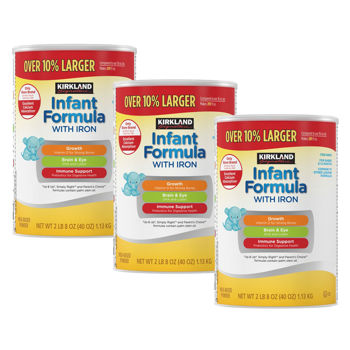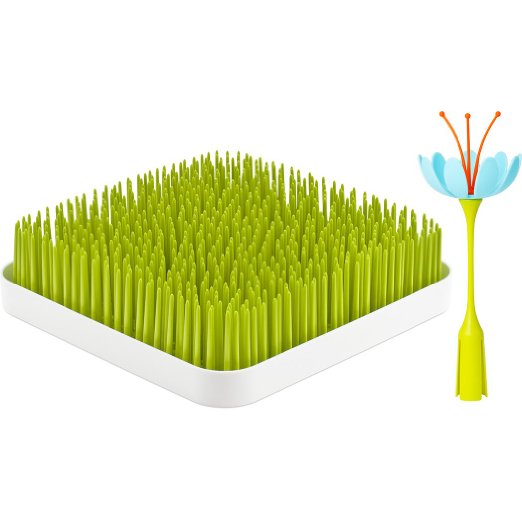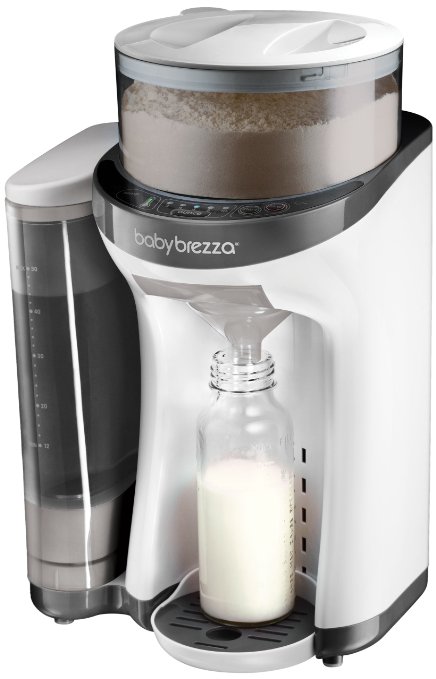 A lot of my friends lately have had babies and have started transitioning their kids, for various reasons, from breast to bottle. I wrote awhile ago about why I'm a formula feeder and since a few of these friends have been asking me about what we use, I figured I'd write it up here and maybe it would be useful down the line to others. (None of these recommendations are paid endorsements.)
A lot of my friends lately have had babies and have started transitioning their kids, for various reasons, from breast to bottle. I wrote awhile ago about why I'm a formula feeder and since a few of these friends have been asking me about what we use, I figured I'd write it up here and maybe it would be useful down the line to others. (None of these recommendations are paid endorsements.)
The formula:
For both kids, I started with what I got for free from the hospital, which, interestingly, was Enfamil for Paul, who was born in 2012, and Similac for James, who was born this year. I don't know why the hospital switched but I always suspected the two formula brands were basically the same and that change just enforced that for me. With both kids, when they were newborns, the hospital gave us the little nursing singles, which are awesomely convenient when they're free but quite expensive when you buy them on your own (plus it's hard to find the corresponding nipple sometimes when you're purchasing them yourself--not that there is anything stopping you from pouring the formula into your own bottle but when you're in the throes of the early days, any extra effort is exhausting.)
With both kids I was shameless about asking for free samples at both the obstetrician's and the pediatrician's. They didn't always have it and I have to say especially with James I got the impression from this one receptionist at my OB's office that she was like "You? Again?" as I asked for more but whatever, I know the formula companies gave it to them for free and the offices weren't widely advertising the freebies so I know I wasn't stealing them from women who needed it.
After the free stuff ran out we started ordering to Kirkland Signature formula which is cheaper than the name brand stuff but, as my pediatrician told me, is essentially the same. We keep one tin in the kitchen and one tin in James' room for nighttime bottles.
A friend asked me recently what type of formula we buy, since each formula company sells a variety of kinds: infant, newborn, gentle, etc. We've been lucky in that both our kids don't seem to have any sort of dietary issues and our pediatrician didn't prescribe any in particular so I've just gone with the "infant" kind. I've always suspected that there isn't a big difference between types of formula within a particular brand although this recent article by Jessica Grose explores the evolution of formula and might have you thinking. If you aren't sure, ask your pediatrician.
This may not be obvious to first-timers but every new tin of formula contains a scoop inside it so you don't have to hold onto your old scoop when you buy a new tin.
Also, if you're pregnant and know you're likely to use formula at some point, you can add formula to your shower registry. Nobody may buy it for you but it's worth a shot!
The bottles:
We pretty much go with Philips Avent plastic and I don't honestly recall why we made that choice. I'm glad we did because the brand so widely available, if you need to you can buy extra nipples and bottles pretty much anywhere. (In case you weren't aware, you can switch out the nipples on the bottles as your baby grows and wants to get more formula out of the nipple. The nipple number indicates the number of holes in the top, so 1 has one hole, 2 has two, and so on. I don't think there's anything stopping you from just poking a hole in a 1 to create a 2 but you'll want to make sure you're using a sterile needle and that it's small and precise enough that you're not ripping a big opening in the nipple.) We also have a few of these Similac bottles in the mix that came as free samples. They're fine--apparently they're discontinued by the manufacturer for whatever reason (maybe the stirring ring thing was just too much unnecessary extra) but the boys accepted them. Anyway, my only complaint with the Philips is that occasionally we make a bottle and shake it and formula splashes all over the place and I have never been able to figure out why sometimes this happens and sometimes not. So I try to remember at the very least to shake the bottle over the sink when possible.
 Prepping and washing:
Prepping and washing:
I boiled the bottles and nipples before using them the first time and then after that washed them in the dishwasher or hand-washed as needed (once again, approved by the pediatrician when I asked whether you need to sterilize the bottles before every feeding.)Â One practical downside of bottle feeding compared to breast is that we are always doing dishes (or rather, bottles.) Due to bacterial issues a bottle should be considered "dead" one hour after your baby starts eating it, so when we mix more than the baby really wants, we end up washing a lot of half-used bottles. After we wash we dry them a bit on this cute rack that a friend gave us after Paul was born. You can create some pretty elaborate sculptures out of the bottles, nipples, rings and tops. It's kind of like Jenga.
The water:
We use good old Lake Michigan-sourced tap water to make our bottles. It's safe for us to drink, it's doctor-approved, and, as somebody pointed out, I drank it while I was pregnant anyway. Plus I've read that that nursery water isn't always safe or regulated so that helps enforce that decision.
On the go:
There are a few ways to carry formula around with you when you're out and about. The Phillips starter set I linked to above has a little container that you can pour pre-measured formula into. I believe I got this Similac on-the-go cap from a friend and it's convenient because it screws onto a bottle. My favorite however are the Enfamil single-serve packets because you can just throw several in your diaper bag or in the trunk of your car and all you need to remember is a bottle (or, again, buy one in a pinch at Walgreens or the grocery store) which you can just bring filled with water or fill up if you're going someplace like a restaurant or someone's house. (The packets make 4 ounce bottles each.) We also received a free sample from Similac (if you're cost-conscious it's not a bad idea to get on the mailing list for some formula companies) of a bottle carrier and tiny ice pack that we keep in the freezer for when we pre-make a bottle and take it with us. I don't think it's made for retail purposes but other versions are easy to find.

The Baby Brezza formula pro:
This item is highly, highly optional and verges on silly but a friend of mine recommended it so heartily and we are using so many hand-me-downs on James I figured, why not. It's like a soda stream or Keurig of baby formula. Fill it up with water and formula, press a button, and boom, instant warm (although that's not so important to us) bottle. I don't think it's flawless--maybe we set it up funny but every so often it makes us a bottle that seems pretty weak on the formula or one that's got too much formula in it. Is it really saving us a ton of time and energy? I don't know really--we are definitely dipping that tiny scoop in the container much less than we would otherwise (except at night, where we do make bottles by hand.) I think if you have multiple bottle-fed kids in the house or you're making a lot of bottles at a time (say, you need to do that for daycare) it's probably more of a lifesaver but for us it's more of an extravagance.
And there you go! I'm sure there are cheaper, faster, healthier ways to do all this but that's just one bottle-feeder's take, and so far, based on a sample size of 2, the results have been good. If you have other recommendations, please share them!

Steph D
That used to happen with my Avent bottles, and I think it was because I didn't have that inner ring in the top seated properly.